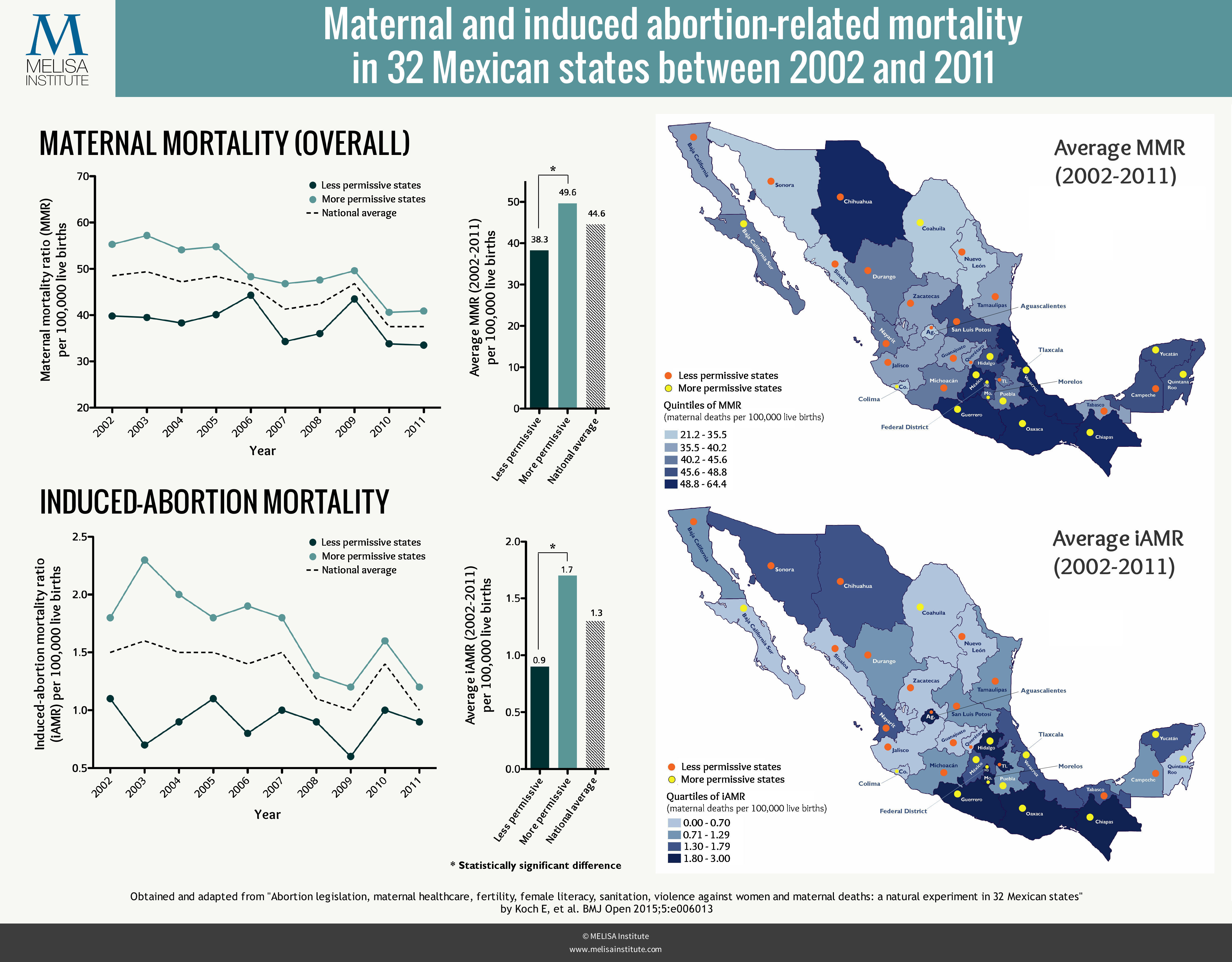When lawmakers press for pro-life laws, abortion advocates derisively label the protection of unborn children a “war on women.” But a new study indicates locations that have pro-life laws protecting unborn children have better maternal mortality rates than places where abortion is legal.
These kinds of studies are not new — as previous reports from Ireland and Chile, for example, have shown that those pro-life nations have better maternal mortality rates than nations with legalized abortion.
The new study, conducted in 32 Mexican states and published today in the open access version of the British Medical Journal (BMJ Open) challenges the notion that abortion is better for women’s health. It confirmed that Mexican states with less permissive abortion laws exhibited 23% lower overall maternal mortality and up to 47% lower mortality from complications of abortion.
The study, conducted by the MELISA Institute along with an international panel of researchers, compared a standard indicator of maternal health known as maternal mortality ratio (MMR) between 18 states with less permissive legislation and 14 states with a more permissive law, during a 10-year study period between 2002 and 2011 (see infographic 1 below, click to enlarge).
According to Monique Chireau, OBGYN and epidemiologist at Duke University “diversity of abortion legislation and the availability of virtually complete vital records in every Mexican state allowed for a unique natural experiment assessing whether populations exposed to less permissive abortion legislation also exhibited higher MMR. Data showed exactly the opposite.”
Chireau pointed out that an important methodological advance in the Mexican study was the ability to identify and disaggregate deaths from abortions without a clear cause or when illegal procedure is suspected.
For John Thorp, OBGYN and researcher from the University of North Carolina at Chapel Hill, results are not entirely unexpected.
In another natural experiment conducted in Chile and published in PLoS ONE, the decrease in MMR remained unaltered even after the legal restriction of abortion, “ruling out the possibility that transition towards a less permissive abortion law will increase, by itself, maternal deaths in this country,” Thorp said. The researcher added that in the United States of America, a study conducted in 23 states by researchers from Stanford University, and published in the Journal of Public Health Policy, showed that less permissive legislation was associated to lower rates of complications due to abortion.
In order to understand why states with less permissive abortion laws exhibited lower maternal deaths, authors assessed the influence of 10 additional variables on the MMR in each state. Altogether, these variables explained almost 90% of the differences in mortality observed in the study. (see infographic2 below, click to enlarge)
According to Joseph Stanford, MD and researcher at the University of Utah, access to prenatal care, skilled attendance at birth, and emergency obstetric care are key factors in reducing maternal deaths. Mexican states with less permissive law “exhibited a more favourable profile for most indicators related to these basic services of maternal healthcare,” highlighted Stanford.
For Fernando Pliego, PhD and sociologist from Universidad Autónoma de México, this study shows that disparities in the level of women’s education, fertility rate, and violence against women play a major role in the maternal health of a population. “Taken together, these variables may explain over 50% of the differences found in Mexican maternal mortality and prevalence of intimate partner violence against women in some states with more permissive abortion legislation, such as the Federal District, may exceed 20%,” Pliego pointed out. The sociologist added that poor women’s education level is one of the more robust predictors of MMR with some states exhibiting literacy rates lower than 80%.
Poverty indicators, such as access to clean water and sanitary sewer coverage also appeared associated to MMR. “Poverty, malnutrition, and exposure to infectious diseases during the fertile age of women increase the risk of maternal death,” explained Sebastián Haddad, MD and researcher from Universidad de Anáhuac in Mexico.
An increase in pregnancies at advanced age and a higher frequency of low birth weight also appeared explaining the differences in MMR among Mexican states. Byron Calhoun, perinatologist and researcher at the University of West Virginia explains, “An increase in the frequency of high risk pregnancies without appropriate referral to specialized medical care may be associated to poor maternal health outcomes, including deaths.”
For molecular epidemiologist Elard Koch, PhD and lead author of the research, an epidemiologic correlation does not necessarily imply causation. Thus, in the light of these results, it cannot be concluded that making abortion legislation less permissive will automatically decrease maternal deaths. Rather, in this study “differences appear to be explained by other variables that directly impact maternal health, most of them better distributed in several Mexican states with laws more favourable to the unborn,” Koch explained.
Finally, the authors propose a list of 7 evidence-based public health recommendations to decrease maternal mortality in Mexico and other developing countries (see infographic 3).
Citation: Koch E, Chireau M, Pliego F, Stanford J, Haddad S, Calhoun B, Aracena P, Bravo M, Gatica S, Thorp J “Abortion legislation, maternal healthcare, fertility, female literacy, sanitation, violence against women and maternal deaths: a natural experiment in 32 Mexican states” BMJ Open 2015;5:e006013










